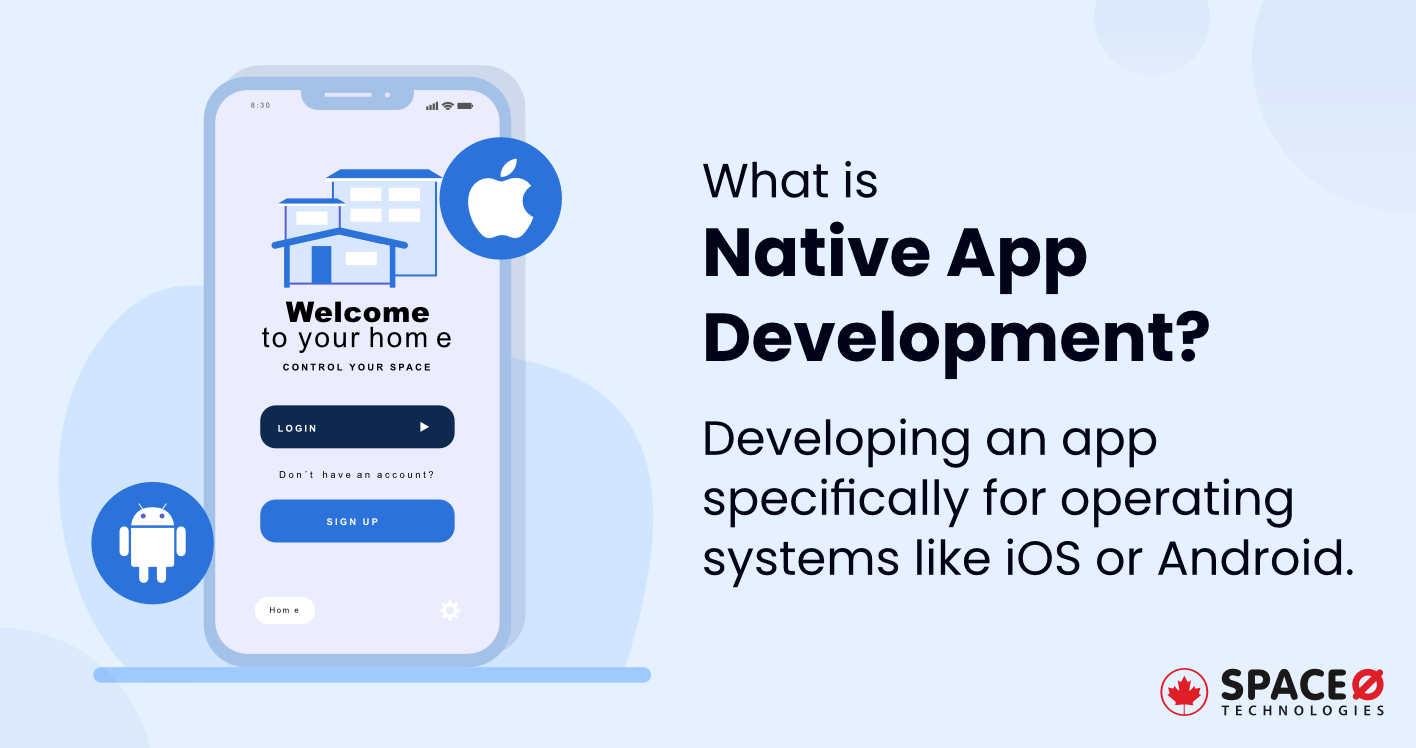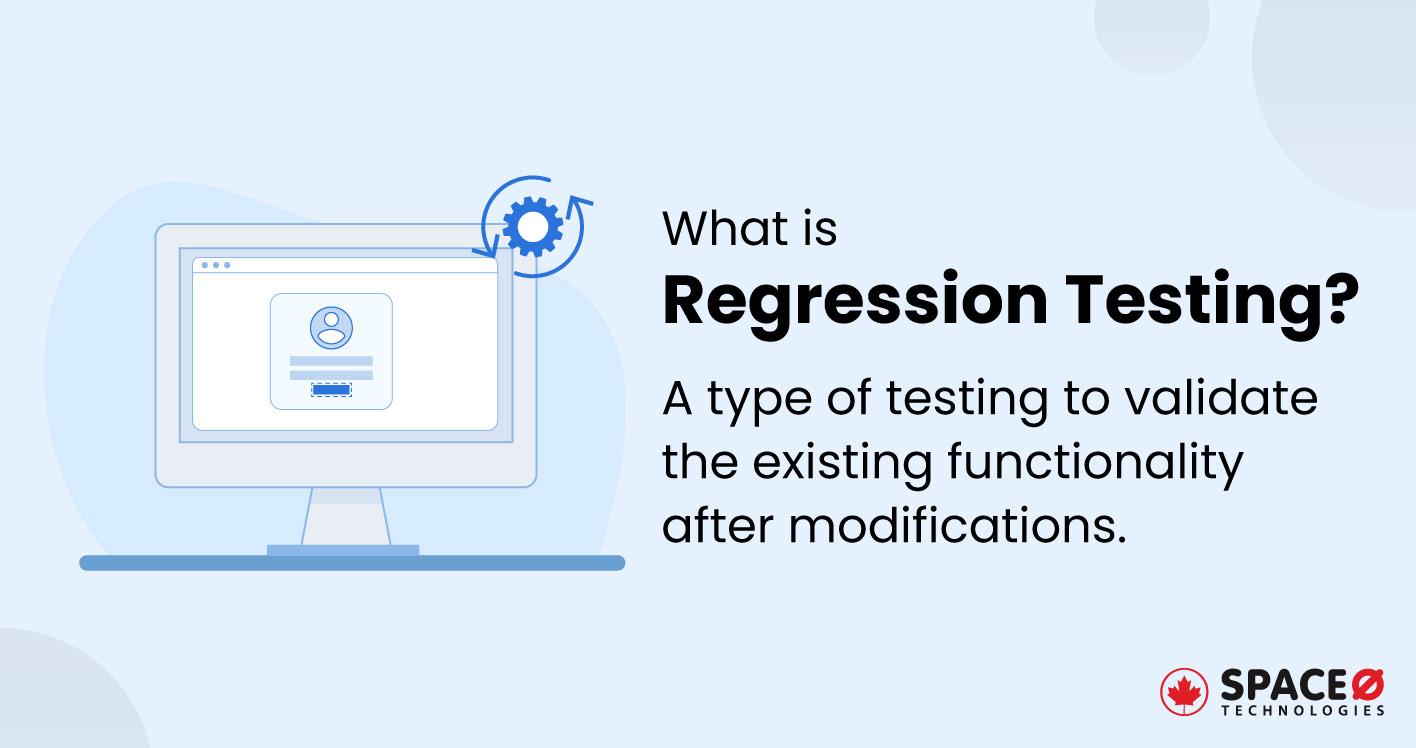
What is Native App Development? [Definition + Advantages]
Table of Contents
What is Native App Development?
Native app development refers to developing software apps for a specific operating system, like Android or iOS. These native apps are developed to work properly on particular platforms and devices, such as Android or iOS.
Native app development is important because it allows developers to build mobile applications that are optimized for a particular platform’s software and hardware. This way, end-users get better performance, tighter integration, and user experiences by using all the capabilities of the device’s hardware and software. Let’s now understand the core attributes of native app development.
4 Key Attributes of Native App Development
Platform-specific Languages and Tools
- Native mobile apps utilize platform-specific SDKs, tools, and programming languages tailored for each mobile platform.
- For iOS app development, developers employ Swift or Objective-C programming languages within the Xcode IDE. This environment provides iOS simulators, interface builders, debugging capabilities, and access to exclusive frameworks like Core Animation.
- Android app development involves the use of Java or Kotlin programming languages in the Android Studio IDE (Integrated Development Environment). This way, native apps combine access to Android-specific libraries, emulators, profiling tools, and more throughout the development process.
Achieve Performance
- Native apps are compiled into machine code optimized for the specific mobile OS and hardware.
- This optimization results in faster code execution, smooth animations at 60+ frames per second, and quicks-up touch responsiveness.
- Native apps consume less battery due to the efficient use of device components, enhancing user satisfaction.
Better User Experience
- Native app developers can implement platform-specific interface elements and patterns, ensuring consistent user experiences.
- Examples include iOS tabs, Android material design elements, and scroll physics that align with user expectations.
- Adherence to OS guidelines and human interface guidelines (HIG) ensures an intuitive UX and native apps can adapt to device form factors.
Direct Hardware Access
- Unlike web apps, native apps can directly communicate with device hardware through platform-specific APIs.
- This enables access to features like high FPS camera usage, background GPS tracking, gesture recognition with accelerometers, and GPU utilization for graphics.
- Native apps request hardware resource permissions, minimizing overhead and enabling greater functionality.
5 Advantages of Native App Development
Here are the key benefits of native app development.
Provides Efficient Performance of Mobile Apps
- Native apps are compiled into machine code optimized for the specific processors, GPUs, and memory architectures of the mobile hardware platform.
- This optimization results in smooth 60fps animations, quicker response times, and low-latency touches, even during multitasking.
- Native Android apps launch faster due to pre-compiled execution, unlike interpreted code.
- Gaming and multimedia apps benefit significantly from native code, leveraging GPUs for stunning graphics, sound, and visualization capabilities not achievable with web apps.
Offers Consistent Look and Feel to End-users
- Native mobile applications adhere to strict human interface guidelines (HIG) and platform-specific UI/UX principles, seamlessly blending into the familiar mobile OS environment.
- For instance, native iOS apps incorporate custom SwiftUI components, horizontal page scrolling, and back gestures, maintaining a consistent Apple look.
- Android mobile apps follow material design specifications, featuring vertical scrolling, adaptive iconography, and modal bottom sheets for a familiar experience.
Get Robust Security Features
- Native platforms provide robust security protections, including app sandboxing, on-device data encryption with hardware-backed secure enclaves, and enforced TLS connection standards.
- iOS features pointer authentication codes (PAC), while Android offers verified boot.
- Native developers can leverage these security measures to store sensitive user data securely, integrate biometrics, and reduce attack surfaces, ensuring enterprise-grade security.
Uses Full Features of Apps to Provide Optimum Performance
- Native apps unlock the complete range of sensors, radios, AI acceleration hardware, and premium device capabilities through particular platform-specific APIs and frameworks.
- Features like tight ARKit integration, UWB and LiDAR access on iOS, ML-backed CameraX on Android, and offline geofenced notifications enable innovative user experiences not achievable on the open web.
Provides Offline Access and Fast Performance
- Native apps boast powerful offline capabilities, allowing users to access content and execute tasks without requiring a constant internet connection.
- This feature becomes especially crucial for applications that must maintain dependable performance in regions with limited or intermittent connectivity, ensuring uninterrupted functionality.
3 Limitations of Native App Development
Let’s talk about the limitations you face when developing a native mobile app for your business.
Requires Intensive Resources for App Development
- Native apps demand separate codebases, design assets build, and tooling for each platform, doubling development effort.
- Specialized iOS, Android, and Windows developers are often required, making it suitable for well-funded organizations.
Ensure Continuous Mobile App Updates
- Maintenance for native apps mirrors platform fragmentation, requiring updates per target OS.
- A UI fix on one platform necessitates a similar update on others, increasing support and maintenance efforts.
Limited Cross-platform Flexibility
- Native apps are exclusive to a single OS, limiting the potential addressable market.
- Businesses may need multiple native apps across iOS and Android platforms, increasing development and maintenance costs.
8 Key Differences Between Native and Cross-platform App Development
Here are the differences between native and cross-platform app development.
| Aspect | Native App Development | Cross-platform App Development |
|---|---|---|
| Development Languages | Native mobile app development is done using platform-specific programming languages and SDKs. For example, Swift and Objective-C for iOS, and Java/Kotlin for Android. Developers must have expertise in these languages. | Cross-platform development typically relies on a single programming language such as JavaScript (React Native), Dart (Flutter), or C# (Xamarin). This allows developers to leverage their existing knowledge or skills in one language to create apps for multiple platforms. |
| Development Environment | Native app development requires platform-specific Integrated Development Environments (IDEs) such as Xcode for iOS and Android Studio for Android. These IDEs provide comprehensive tools and emulators for testing. | Cross-platform development often uses IDEs like Visual Studio Code or JetBrains IDEs that offer extensions or plugins for the chosen framework (e.g., React Native or Flutter). Web-based editors like Expo can also be used for certain cross-platform projects. |
| Code Reusability | Native apps require separate codebases for each platform (iOS and Android), resulting in limited code reuse. This means developers need to duplicate efforts when implementing features and maintaining the app. | Cross-platform mobile development promotes high code reuse, typically exceeding 80%. The majority of the codebase can be shared across platforms, reducing development effort and time. |
| Performance | Native apps typically offer maximum performance as they are optimized for their respective platforms. They can fully leverage platform-specific APIs and hardware. | Hybrid apps introduce an additional layer of abstraction to achieve platform independence. While modern cross-platform frameworks aim to minimize performance differences, there may still be slight performance trade-offs compared to fully native apps. |
| Access to Device Features | A native mobile app has full access to platform-specific APIs and device features, allowing it to provide deep integration with the operating systems and hardware. | Cross-platform apps that can access most device features through plugins or modules. However, for advanced or niche functionalities, developers may need to create custom plugins or wait for community contributions. |
| User Experience | Native apps offer a native look and feel, providing a consistent and familiar experience to users on each platform. | Hybrid apps can achieve a native-like experience but may require extra effort to match the UI/UX conventions and behaviours of each platform. This can include platform-specific styling and navigation patterns. |
| Development Time | When you develop native mobile apps, it takes a longer duration due to the need to manage separate codebases, write platform-specific code, and conduct testing for each platform individually. | Cross-platform development can significantly reduce development time because of code sharing and faster iteration cycles. However, some platform-specific adjustments may still be required. |
In conclusion, native app development embraces platform-specific languages, tools and capabilities to build mobile apps optimized for those environments. While more demanding in terms of specialized skills and needing separate iOS and Android platform codebases, this route unlocks superior performance, consistency, and exclusive device access.
- Utilizes Swift, Objective-C, and Xcode for Apple ecosystems and Java, Kotlin, and Android Studio for Google ecosystems to maximize integration
- Enables highly responsive apps with smooth animations, and quick loading via direct hardware optimization
- Provides seamless UX by adopting platform UI/UX conventions and guidelines
- Grants access to integrated sensors, AI acceleration and innovations not available to cross-platform apps
For apps where efficiency, speed and leveraging device innovations are critical, the extra efforts of native development pay dividends via best-in-class user experiences. Despite some flexibility drawbacks, native apps cover the vast majority of mobile users currently on iOS or Android. So, developers can build native apps that instantly take advantage of cutting-edge mobile capabilities.
All our projects are secured by NDA
100% Secure. Zero Spam
*All your data will remain strictly confidential.
Trusted by


Bashar Anabtawi
Canada
“I was mostly happy with the high level of experience and professionalism of the various teams that worked on my project. Not only they clearly understood my exact technical requirements but even suggested better ways in doing them. The Communication tools that were used were excellent and easy. And finally and most importantly, the interaction, follow up and support from the top management was great. Space-O not delivered a high quality product but exceeded my expectations! I would definitely hire them again for future jobs!”

Canada Office
2 County Court Blvd., Suite 400,
Brampton, Ontario L6W 3W8
Phone: +1 (437) 488-7337
Email: sales@spaceo.ca




